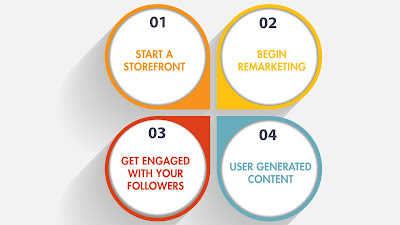Have you been trying hard to acquire customers for your online
business? Are you not satisfied with the amount of customers you are
getting through social networks? Well, you must be going wrong
somewhere. Read the blog and you will get to know the right way to use
social media in order to generate more sales. So, here we go..
1. Start a storefront
What if your Facebook page acts as an ecommerce store? Won't it be
great? You can do so by installing an ecommerce app on your Facebook
page. Just start a storefront, add your products, and you are ready to
sell. If you find yourself confused regarding choosing the platform,
it's better to make use of recommendation engines by means of which you
can find the most suitable ecommerce app for your requirements.
2. Begin Remarketing
Remarketing on social networks like Facebook will help you sell your
products and services in the most efficient way. Wondering how? Well,
The process will not only influence potential customers to get engaged
with the product, but will also help retain existing customers as well.
That being said, it gives you an opportunity to target people who have
already visited or purchased from your website earlier. See how can you
use the process.
If a user left your website without buying your product, you can
re-target the user and influence the person to purchase the product.
This process of customer acquisition will simply encourage the user to
join the list of your customers. Why don't you go for customer
retention? Yes! Selling your products to the customers who have already
purchased your product will give you better chances of selling your
product. Moreover, it will help you enhance the ROI of your business.
3. Get engaged with your followers
Social media, apart from promoting a brand, allow you to build strong
relationship with your followers. How can you do so? Simple follow the
80/20 rule when sharing your content. This means when you share 5
stories on your timeline, you must include one promotional story or
content. This ultimate social media strategy will help you acquire loyal
customers for your business.
4. User Generated Content
Now that you have a sufficient follower base on your social sites, you
can make use of the existing followers to grow your business further.
Well, you can do so by influencing your followers to share their
experiences. This user generated content will give your brand an
exposure, thus enhancing the sales of your product to a great extent.
Performing the steps given above can easily help you enhance the list of your customers. If you are looking for the best digital marketing company
that can help you make the loyal customers, Mamsys Consultancy Services
is the one that can help you grow your business. Get efficient social
media services and let your social media users be your customers.







